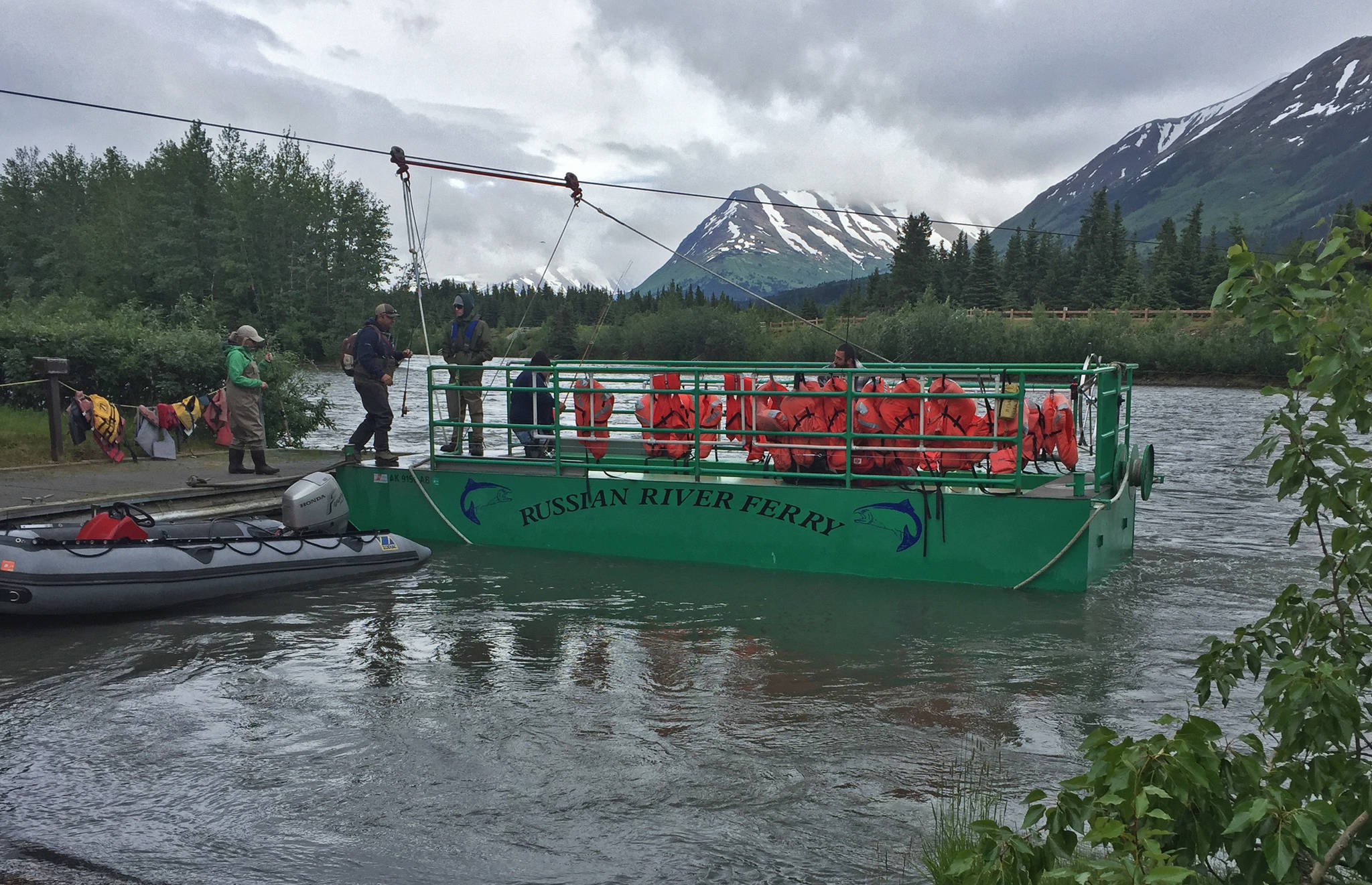The only thing that remains of a lodge that used to attract people from all over the world to stay near the Russian River is the ferry across the Kenai River.
Every year, thousands of people board a simple flat-bottomed boat to cross the Kenai in search of sockeye salmon. The other way to get there is through the U.S. Forest Service’s campground, driving down to the far side and hiking in via a boardwalk. The ferry runs on a cable across the river and takes less than five minutes.
Though the Kenai National Wildlife Refuge manages the boat launch area and the land around the river, the ferry itself is managed by a concessionaire — the Anchorage-based Alaska Recreational Management. The familiar green boat with the blue salmon emblazoned on the side has been there for about 25 years, said Bruce McCurtain, Alaska Recreational Management’s general manager.
He said one thing guests often comment on is the ferry’s mode of transport — it has no engine at all.
“The current does every single bit of it,” he said. “People always say, ‘Oh my goodness, the motor is so quiet I can hardly hear it,’ and I say, ‘The motor is the Kenai River.’”
The ferry requires two people to make its trips to and fro, who have to be Coast Guard-licensed captains and deckhands, despite the boat’s lack of motor. It does take some skill to negotiate the flat-bottomed boat through the slackwater at the edge of the river into the current, but once there, it’s a relatively easy ride, designed for most people to be able to operate, McCurtain said.
Fred Henton established a lodge at the confluence of the two rivers in 1945 built the first ferry. He initially built it on the south side illegally on the refuge — then called the Kenai National Moose Range — and moved it to the north side of the river in 1946. The lodge changed hands a number of times until 1988, when the operator lost the ferry contract and shut down. The lodge, which was then called Sportsman’s Lodge, was closed and torn down after the Alaska Department of Fish and Game bought the property to turn it into a boat launch.
The ferry has lasted, though the original wooden boat was replaced.
“It is a completely unusual kind of system,” McCurtain said. “The entire reason that there’s a ferry there is that there’s a clearwater system running into the Kenai there.
(The ferry) is still a unique, very viable way to get to a red salmon fishing river. There’s not many places that have red salmon runs like the Russian River and the Kenai have.”
In a given year, anywhere from 25,000–40,000 will use the ferry to cross the river to fish, McCurtain said. Once the boat is loaded with anglers, the captain will gently nose the boat into the current, using the angle to carry it in to the fast-flowing Kenai and across to the far bank. When it’s time to return, the captain will reverse.
It’s one of the highest-traffic areas on the Kenai River, though, with anglers all along the banks and rafts, drift boats and kayaks frequently passing through on their way downriver. McCurtain said Alaska Recreational Management keeps a rescue boat at the dock with the ferry and occasionally has to do water rescues for boaters who get into trouble. Generally, things go smoothly, but the ferry captain has to make sure he or she times the trips carefully to ensure that there isn’t a boat coming downstream.
“It’s dangerous, and that’s why we pay skippers the big bucks, to use good judgment on when to pull that boat across,” he said.
The Russian River Ferry can be accessed from the parking lot at approximately mile 55 of the Sterling Highway just west of Cooper Landing.
Reach Elizabeth Earl at eearl@peninsulaclarion.com.

